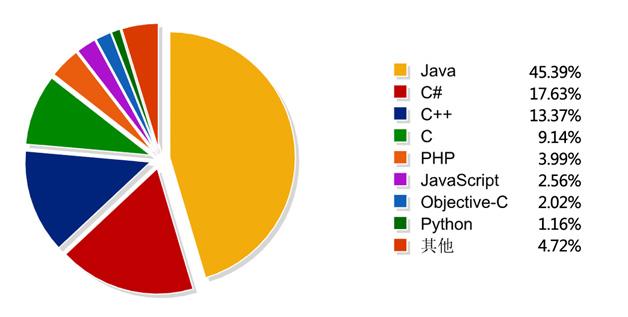一些实验中用过的python函数/方法(持续更新)
衡量运行时间
很多时候你需要计算某段代码执行所需的时间,可以使用 time 模块来实现这个功能。
import time
startTime = time.time()
# write your code or functions calls
endTime = time.time()
totalTime = endTime - startTime
print("Total time required to execute code is =", totalTime)
# output
Total time required to execute code is = 4.76837158203125e-07
获取两个列表之间的差异
不使用循环,找出两个列表的差异,可以使用集合的 symmetric_difference 方法。
list1 = ["Scott", "Eric", "Kelly", "Emma", "Smith"]
list2 = ["Scott", "Eric", "Kelly"]
set1 = set(list1)
set2 = set(list2)
list3 = list(set1.symmetric_difference(set2))
print(list3)
# output
["Emma", "Smith"]
翻转字符串和列表
a = "zhihu"
print("Reverse is", a[::-1])
List = ["Shriya", "Lavina", "Sampreeti" ]
List.reverse()
print(List)
# output
Reverse is uhihz
["Sampreeti", "Lavina", "Shriya"]
连接列表中的多个字符串
需要调用字符串的 join 方法,还可以设置间隔符,下面为间隔符为空格的例子。
a = ["Python", "Is", "Great"]
print(" ".join(a))
# output
Python Is Great
同时使用多个比较运算符
在 C 中不能连续进行大小比较,在 Python 中就可以。
n = 10
result = 1 < n < 20
print(result)
result = 1 < n <= 9
print(result)
# output
True
False
打印导入模块的文件路径
import os
import socket
print(os)
print(socket)
# output
<module "os" from "D:\Users\xxx\miniconda3\envs\xin\lib\os.py">
<module "socket" from "D:\Users\xxx\miniconda3\envs\xin\lib\socket.py">
二维列表转一维列表
只需使用 Itertools 一行代码,即可将嵌套列表转换为一个列表。
import itertools
a = [[1, 2], [3, 4], [5, 6]]
print(list(itertools.chain.from_iterable(a)))
# output
[1, 2, 3, 4, 5, 6]
Lambda 匿名函数用法
要声明一些小功能,但不使用常规的声明方式,可以用使用 lambda。 python 中的 lambda 关键字为声明匿名函数提供了快捷方式。
subtract = lambda x, y : x-y
subtract(5, 4)
# 可结合map reduce使用
列表中每个元素出现次数
Counter(list).most_common(n) 根据列表 / 字符串中每个元素出现次数,降序返回列表 / 字符串中的前 n 个元素,其中 n 是指定的数字。在元组中返回各个元素及其出现的次数。
# Code to find top 3 elements and their counts
# using most_common
from collections import Counter
arr = [1, 3, 4, 1, 2, 1, 1, 3, 4, 3, 5, 1, 2, 5, 3, 4, 5]
counter = Counter(arr)
top_three = counter.most_common(3)
print(top_three)
# output
[(1, 5), (3, 4), (4, 3)]
输出结果为个数最多的 3 个数字,其中 1 出现 5 次,3 出现 4 次,4 出现 3 次。
找到列表中最常出现的值
test = [1, 2, 3, 4, 2, 2, 3, 1, 4, 4, 4]
print(max(set(test), key = test.count))
# max(test, key = test.count) 也可以实现同样功能,但列表数据量大时会变慢
# s.count(x) x在s中出现的总次数
# output
4
检查对象的内存使用情况
当你要使用任何数据结构(例如列表,字典或任何对象)来存储值或记录时,可以检查数据结构使用了多少内存。
使用 sys 模块中定义的 sys.getsizeof 函数获取内置对象使用的内存,返回对象的大小(以字节为单位)。
import sys
x = 1
print(sys.getsizeof(x))
# output
28
注意:sys.getsizeof 不会为第三方对象或用户定义的对象返回正确的值。
字符串乘法拼接
n = 3
a = "Python"
print(a * n)
# output
PythonPythonPython
将多个列表同一位置元素zip在一起
当你需要连接许多迭代器对象(如列表)以获取单个列表时,可以使用 zip 函数,结果显示每个新列表每个元素,是所有迭代器对象同一位置值的元组。
Year = (1999, 2003, 2011, 2017)
Month = ("Mar", "Jun", "Jan", "Dec")
Day = (11,21,13,5)
print(zip(Year, Month, Day))
# output
[(1999, "Mar", 11), (2003, "Jun", 21), (2011, "Jan", 13), (2017, "Dec", 5)]
.get获取字典中key对应的值,不存在则返回指定值
通过 [] 方式获取字典中的值时,如果键不存在则会报错,可以使用字典的 get 函数,指定键不存在时,可以返回的值。
比如字典中有键 ‘c’,则返回对应的值,否则返回 3。
d = {"a":1, "b":2}
print(d.get("c", 3))
# output
3
for...else...
Python 中的 for 循环可以使用 else 关键字,如果在 for 循环中遇到 break 跳出循环,则不执行 else 子句,否则执行。
for i in range(5):
pass
else:
pass
{**d1, **d2}合并字典
d1 = {"a": 1}
d2 = {"b": 2}
print({**d1, **d2})
# output
{"a": 1, "b": 2}
求列表中前 n 个最大 / 最小的数字
使用 heapq 返回任何列表中的前 n 个最小 / 最大元素,这里 n 是指定的数字。
# Python code to find 3 largest and 4 smallest
# elements of a list.
import heapq
grades = [110, 25, 38, 49, 20, 95, 33, 87, 80, 90]
print(heapq.nlargest(3, grades))
print(heapq.nsmallest(4, grades))
# output
[110, 95, 90]
[20, 25, 33, 38]
输出的第一行给出列表等级中存在的最大数字中的 3 个。 同样,输出的第二行将打印出列表等级中存在的最小元素中的 4 个,此功能的另一个特点是它不会忽略重复值。
x, y = y, x 就地交换两个数字
x, y = 10, 20
print(x, y)
x, y = y, x
print(x, y)
# output
10 20
20 10
set(listNumbers)从列表中删除重复项
listNumbers = [20, 22, 24, 26, 28, 28, 20, 30, 24]
print("Original= ", listNumbers)
listNumbers = list(set(listNumbers))
print("After removing duplicate= ", listNumbers)
# output
Original= [20, 22, 24, 26, 28, 28, 20, 30, 24]
After removing duplicate= [20, 22, 24, 26, 28, 30]
比较两个无序列表
假设你有两个包含相同元素的列表,但是两个列表中的元素顺序都不同。可以使用 collections.Counter()方法进行判断,确定它们是否元素值都相同。
from collections import Counter
one = [33, 22, 11, 44, 55]
two = [22, 11, 44, 55, 33]
print("two lists are equal.", Counter(one) == Counter(two))
# output
two lists are equal.
检查列表中的所有元素是否唯一
def isUnique(item):
tempSet = set()
return not any(i in tempSet or tempSet.add(i) for i in item)
listOne = [123, 345, 456, 23, 567]
print("All List elemtnts are Unique ", isUnique(listOne))
listTwo = [123, 345, 567, 23, 567]
print("All List elemtnts are Unique ", isUnique(listTwo))
# output
All List elemtnts are Unique True
All List elemtnts are Unique False
字节转换为字符串
要将字节转换为字符串,可以对 bytes 对象进行解码以生成字符串。
byteVar = b"pynative"
str = str(byteVar.decode("utf-8"))
print("Byte to string is" , str )
# output
Byte to string is pynative
dict(zip(ItemId, names))将两个列表转换成字典
例如你有两个列表,一个列表包含键,第二个列表包含对应的值,想将这两个列表转换为一个字典。可以使用 zip 函数来进行实现。
ItemId = [54, 65, 76]
names = ["Hard Disk", "Laptop", "RAM"]
itemDictionary = dict(zip(ItemId, names))
print(itemDictionary)
# output
{54: "Hard Disk", 65: "Laptop", 76: "RAM"}
设置小数位格式
你要显示带有 2 个小数位的任何浮点数。 例如 73.4(73.40)和 288.5400(88.54)。
number= 88.2345
print("{0:.2f}".format(number))
s.ljust(10, "-") 字符串左对齐填充到10
左对齐函数 ljust 和右对齐函数 rjust,都需要指定字符串长度,以及想要填充的字符,不指定则默认填充空格。
s = "12345"
print(s.ljust(10, "-"))
print(s.rjust(10, "0"))
# output
12345-----
0000012345
https://www.zhihu.com/people/zhao-xiao-de-93/posts
